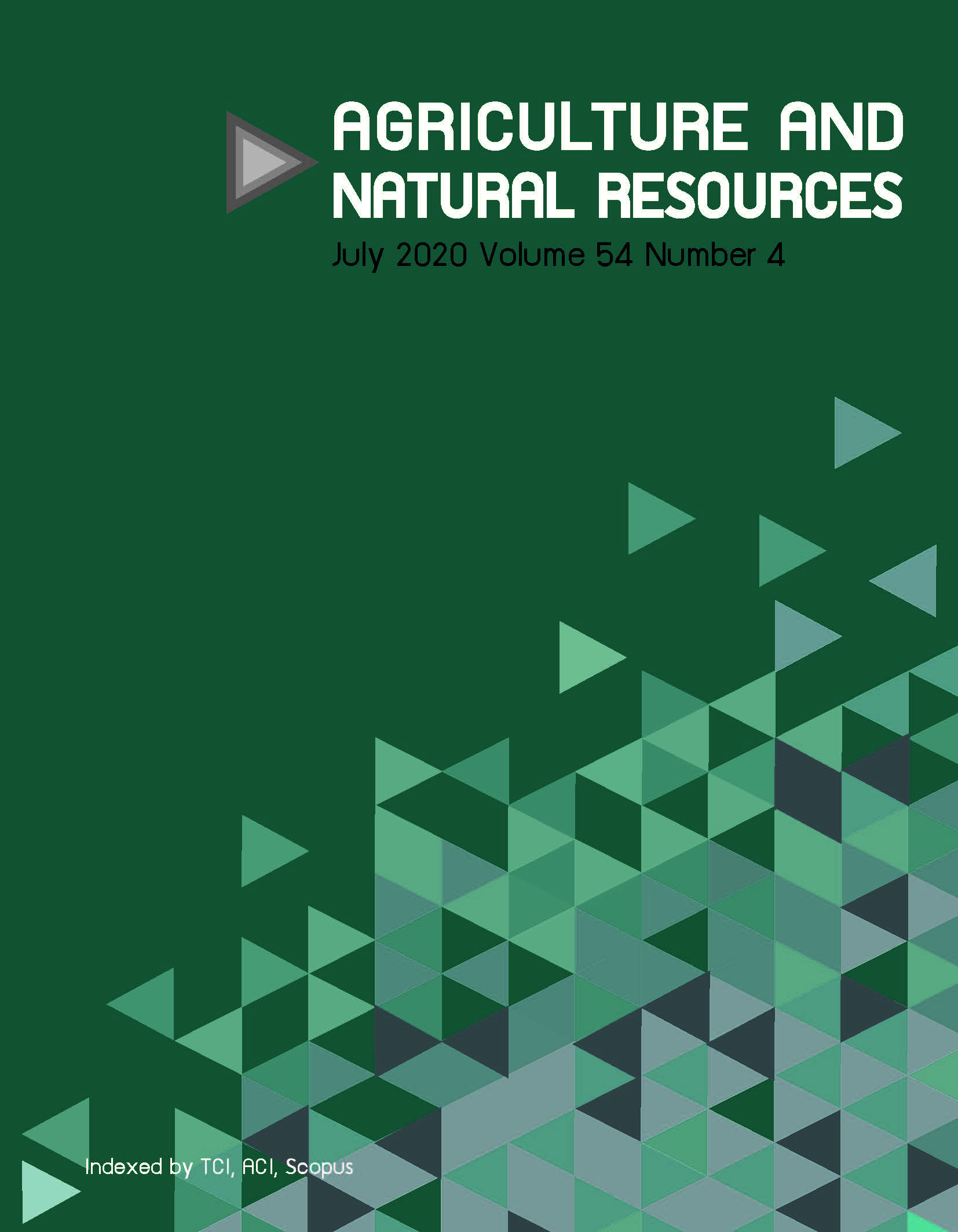Inheritance, heritability and association of agronomic traits and sesamin and sesamolin contents in sesame (Sesamum indicum L.)
Keywords:
Breeding, Correlation, Gene action, Heritability, LignanAbstract
Although many research reports provide information on the gene action of agronomic traits, such basic information is still inadequate for the sesamin and sesamolin contents. The current study determined the gene effects that control agronomic traits and the sesamin and sesamolin contents, estimated the heritability of those traits and investigated the correlations and path analysis among the traits studied. Two crosses, MKS-I-84001 × White UB2 and White UB2 × Kanchanaburi, were made among three parents to generate six populations. All generations were planted in a randomized complete block design with three replications at Kalasin University, Thailand. Genetic analysis showed that the dominance gene effect significantly controlled the inheritance of sesamin. The additive × dominance interaction effects provided a major contribution to the inheritance of the sesamolin content while grain yield/plant was mainly controlled by dominance × dominance interaction effects. The sesamin and sesamolin contents showed low and moderate heritability, respectively. The sesamin and sesamolin contents had significant negative correlations with capsules/plant (correlation coefficient [r] = -0.55 [p < 0.01] and -0.41[p < 0.05], respectively), 1,000 grain weight (r = -0.54 [p < 0.01] and -0.59 [p < 0.01], respectively) and grain yield/plant (r = -0.51[p < 0.01] and -0.35 [p < 0.05], respectively). Path analysis showed that the 1,000 grain weight had the highest negative direct effect on the sesamin (-0.42) and sesamolin (-0.60) contents followed by capsules/plant. Information on the gene action and heritability of sesamin and sesamolin can be used for choosing a suitable breeding method, and information on the correlation can be utilized as a criterion to select those traits through agronomic traits.
Downloads
Published
How to Cite
Issue
Section
License

This work is licensed under a Creative Commons Attribution-NonCommercial-NoDerivatives 4.0 International License.
online 2452-316X print 2468-1458/Copyright © 2022. This is an open access article under the CC BY-NC-ND license (http://creativecommons.org/licenses/by-nc-nd/4.0/),
production and hosting by Kasetsart University of Research and Development Institute on behalf of Kasetsart University.







